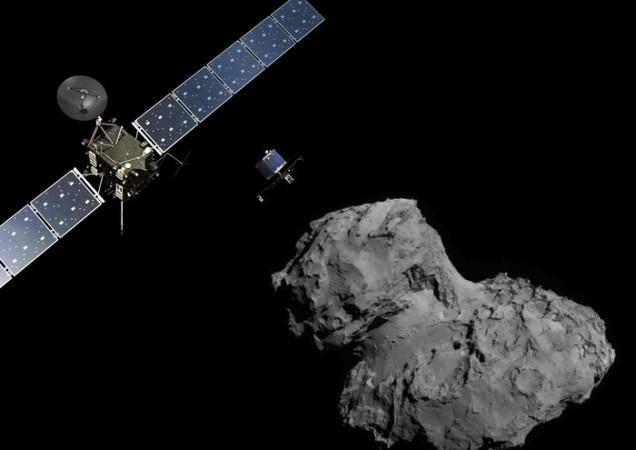
On Wednesday, the mankind would achieve the most extraordinary mission in outer space, as the European Space Agency's Rosetta spacecraft is expected to land on Comet 67P/Churyumov-Gerasimenko, which is said to be a part of the birth of solar system.
If the mission is successful, it would be a culmination of the spaceship's 10-year-long journey in space, in which it has covered four billion miles, having finally arrived near the comet on 6 August this year. It is the first man-made object to circle a comet.
On Wednesday, the spacecraft will deploy its lander, Philae, to the surface of the comet, and could open up the historic opportunity for man to understand the formation of solar system and the origin of life.
"Why comets are so interesting is because they've been in deep freeze since the birth of the solar system," Dr Lewis Dartnell, an astro-biologist at the University of Leicester told The Telegraph. "By digging into it, Philae will be able to tell what temperature the comet was when it formed – which sounds boring, but immediately begins to tell us what the solar system was like in its very early years."
The lander is equipped with several instruments such as a camera, a drill, a magnetic field detector, a ground-penetrating radar to see into the comet's interior.
When?
The separation of the lander will take place at 4:03am EDT (1:03am PDT, 9:03am GMT, 10:03am CET), and it is expected to take seven hours to land on the comet, which is expected at 11:02am EDT (8:02am PDT, 4:02pm GMT, 5:02pm CET).
The lander will land on the smaller lobe of the comet on a site that the space agency has termed Agilkia, as reported by sci-news.com.
Where is the Comet?
Comet 67P/Churyumov-Gerasimenko is 315,890,887 miles from Earth. To put the massive galactic distance in perspective, light will take nearly 30 minutes to reach it from Earth.
Where to Follow?
You can follow the historic mission here – http://rosetta.esa.int/
- Webcast live from mission control: http://new.livestream.com/esa/cometlanding
Check the ESA TV schedule here.
- Rosetta blog: http://blogs.esa.int/rosetta
- Twitter:
http://www.twitter.com/ESA_Rosetta
http://www.twitter.com/esaoperations
http://www.twitter.com/philae2014
http://www.twitter.com/esascience
All channels and webpages, including the Twitter, Rosetta Facebook and ESA Flickr social media accounts, are linked from the main Rosetta mission page: http://rosetta.esa.int

















